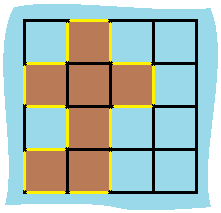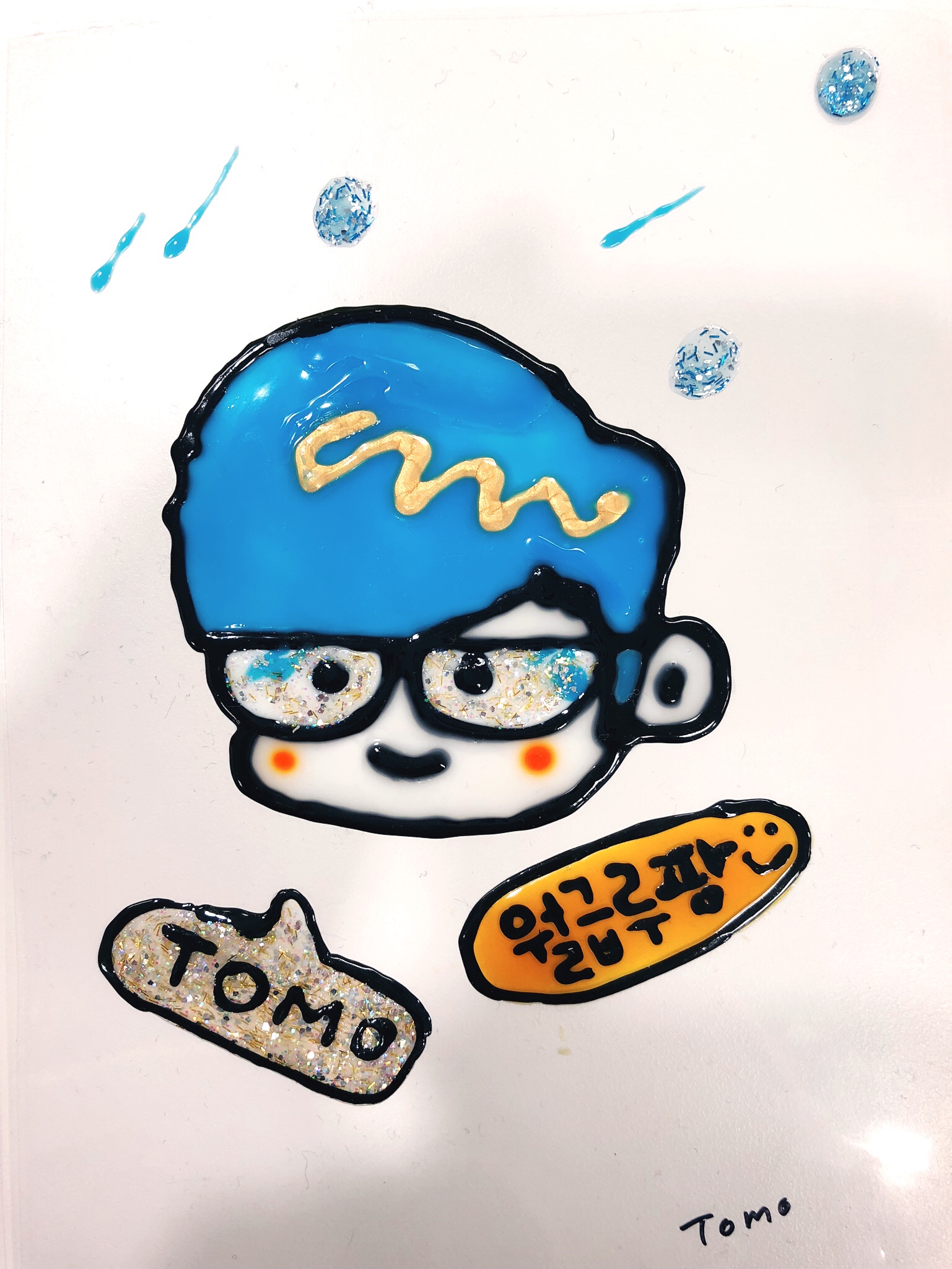
Problem
You are given row x col grid representing a map where grid[i][j] = 1 represents land and grid[i][j] = 0 represents water.
Grid cells are connected horizontally/vertically (not diagonally). The grid is completely surrounded by water, and there is exactly one island (i.e., one or more connected land cells).
The island doesn't have "lakes", meaning the water inside isn't connected to the water around the island. One cell is a square with side length 1. The grid is rectangular, width and height don't exceed 100. Determine the perimeter of the island.
Example 1:
Input: grid = [[0,1,0,0],[1,1,1,0],[0,1,0,0],[1,1,0,0]] Output: 16 Explanation: The perimeter is the 16 yellow stripes in the image above.Example 2:
Input: grid = [[1]] Output: 4Example 3:
Input: grid = [[1,0]] Output: 4Constraints:
・ row == grid.length ・ col == grid[i].length ・ 1 <= row, col <= 100 ・ grid[i][j] is 0 or 1. ・ There is exactly one island in grid.
Idea
직관적으로 생각해도 쉽게 풀 수 있는 문제다. grid를 탐색하면서 땅일 경우 상・하・좌・우를 확인하여 가장자리거나 물일 때 1씩 더하면 된다.
Solution
class Solution { public int islandPerimeter(int[][] grid) { int m = grid.length; int n = grid[0].length; int perimeter = 0; for (int i=0; i < m; i++) { for (int j=0; j < n; j++) { if (grid[i][j] == 1) { if (i == 0 || (i > 0 && grid[i-1][j] == 0)) perimeter++; if (j == 0 || (j > 0 && grid[i][j-1] == 0)) perimeter++; if (i == m-1 || (i < m-1 && grid[i+1][j] == 0)) perimeter++; if (j == n-1 || (j < n-1 && grid[i][j+1] == 0)) perimeter++; } } } return perimeter; } }

